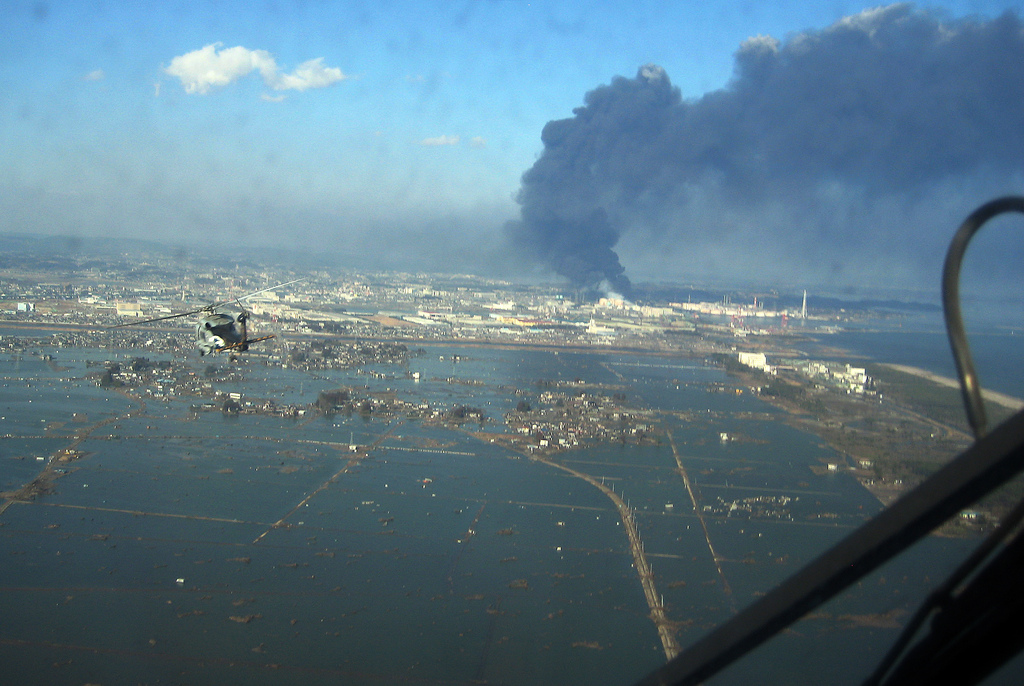The unexpected nature of this week’s earthquake in Japan, plus the damage from the subsequent tsunami and fires, makes estimating insured losses from the disaster especially difficult, senior executives at two top catastrophe risk modeling firms said Saturday.
About $24 billion of insured property is located in the 3 km (1.8 mile) band along the coast of the four prefectures, or states, most affected by the quake, Jayanta Guin of disaster-modeling firm Air Worldwide told Reuters. There is about $300 billion of insured property in the four prefectures most affected by the quake’s shaking.
That does not equate in any way to a similar loss value, Guin said, adding that it would be days or even weeks until an accurate estimate could be made of what was lost, how it was lost, and what it would take to repair the damage.
One problem is that the damage was difficult to model because the intensity and location of the quake were unexpected, Guin said.
EQECAT, another risk modeler, said the quake was at least eight times stronger than any it had modeled in that particular part of Japan for the next 30 years.
The firm said Saturday that economic losses from the quake would likely exceed $100 billion. It did not release an estimate for insured losses.
Air Worldwide, EQECAT and another firm, RMS, are the three main risk-modeling firms that help insurers predict where and how they will suffer losses and how severe they will be.
“We are in unprecedented territory when it comes to understanding the estimate of this earthquake,” said Guin, Air Worldwide’s senior vice president of research and modeling.
“Even the best scientific consensus, including scientists from Japan, had not contemplated such a large scenario in that part of the Japan trench.”
Equity analysts covering the insurance industry said Friday the quake may have caused up to $15 billion [since revised upward] in insured losses, which could make it the costliest quake in insurance industry history.
NUCLEAR EFFECTS
Friday’s 8.9-magnitude quake generated a tsunami wave 33 feet [10 meters] high, and estimates put the death toll at 1,700 or more [more recent estimates exceed 10,000]. Officials were scrambling Saturday to contain the damage from a nuclear plant explosion that initially evoked fears of a Chernobyl-like disaster.
Early indications were that Japan was not a party to international conventions limiting nuclear liability.
American International Group, the largest foreign property insurer in Japan, is believed to have a blanket nuclear exclusion in all its Japanese policies.
That raises questions about how much coverage homeowners affected by the accident at the Fukushima Daiichi reactor will end up having. The answer likely will depend on what sort of coverage operator Tokyo Electric has in place.
“The scrambling of the reactor is a huge event that’s really difficult to model,” EQECAT senior vice president Tom Larsen said in an interview. He said any impact was more likely to be felt by life insurers than property insurers.
Another major question for the insurance industry in the days ahead will be whether the disaster will force insurers and reinsurers to raise prices after three years of declines.
Going into this year, brokers and analysts said it would take an insured event of $40 billion to $50 billion to stem price declines for at least one year.
Standard & Poor’s equity analysts estimated Friday that insurers faced at least $30 billion in claims this quarter from a combination of earthquakes in Japan and New Zealand, floods in Australia and losses related to unrest in the Middle East.
S&P said that would probably be enough to turn the market.
Major insurers and reinsurers with exposure to the Japanese market, such as American International Group, ACE Ltd, Munich Re and Swiss Re, are expected to take weeks to assess their own losses. Even then, the numbers can steadily rise for months afterward, as they did with the September 2010 earthquake in New Zealand.
One thing that is likely to contain their losses is the relatively small proportion of Japanese who have insurance. By some estimates, only 14 percent of property owners in the country have earthquake insurance.
“The tough part is, what’s that going to do to their economy? If they have that much damage that’s uninsured, you may have to tough it out,” EQECAT’s Larsen said.
(Reporting by Ben Berkowitz; Editing by Bill Trott and Paul Simao)
Topics Catastrophe Carriers Profit Loss Property Market
Was this article valuable?
Here are more articles you may enjoy.



 Abundant Reinsurance Capacity Accelerates Market Softening During 1/1 Renewals
Abundant Reinsurance Capacity Accelerates Market Softening During 1/1 Renewals  Top National Insurance Journal Stories of 2025
Top National Insurance Journal Stories of 2025  Three Top P/C Insurers Account for Most of Insurance AI Patents
Three Top P/C Insurers Account for Most of Insurance AI Patents  Longtime Motel 6 Spokesman Tom Bodett Settles Lawsuit Against Chain
Longtime Motel 6 Spokesman Tom Bodett Settles Lawsuit Against Chain 

